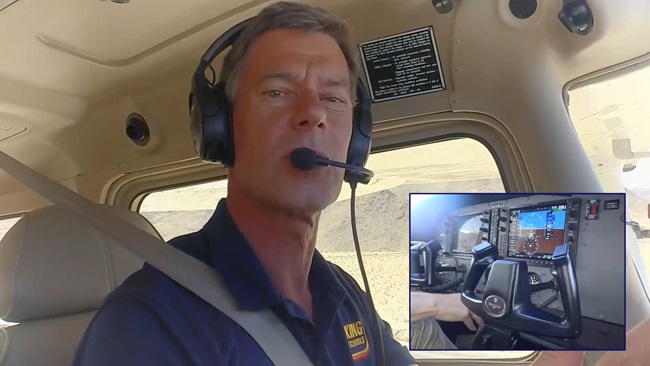ASF 'Collision Avoidance' seminars reach over 7,000 pilots
<BR><SPAN class=twodeck>Comprehensive Safety Advisor publication added</SPAN>
Since its debut in October 2000 at AOPA Expo, the critically acclaimed AOPA Air Safety Foundation "Collision Avoidance" seminar has reached nearly 7,500 pilots in 60 locations throughout the United States.
Now, a new ASF Safety Advisor on collision avoidance is available to supplement that seminar. The booklet can also serve as a self-study course benefiting pilots unable to attend the live seminar.
Both the seminar and the new Safety Advisor are timely. Statistics for 2000 show a small increase in the number of midair collisions over the previous year and a larger increase in the number of fatal midair collisions. ASF Executive Director Bruce Landsberg pointed out that while aerial collisions are rare, "when they do occur, they're usually disastrous and always bad for aviation."
The new 16-page ASF Safety Advisor publication Collision Avoidance: Strategies and Tactics is illustrated with dramatic photographs and graphics. It includes concise information on the physiology of vision, points out when and where most midair collisions occur, and suggests techniques and resources useful in avoiding such accidents.
Single copies of the new Safety Advisor are available without cost in booklet form by calling 800/638-3101, ordering over the ASF Web site, or by writing Collision Avoidance, AOPA Air Safety Foundation, 421 Aviation Way, Frederick, Maryland 21701. The booklet is also available in PDF format on the Web.
Meanwhile, the popular interactive ASF "Collision Avoidance" seminar has been scheduled in an additional 40 cities throughout the United States for the remainder of 2001. It uses videotape segments and interactive discussions that highlight ways to reduce midair collision risks, including:
- Effective procedures to locate and track traffic;
- How to get the most collision avoidance help from ATC;
- The most common collision scenarios and how to avoid them;
- Coping with aerial distractions;
- Cockpit resource management principles for effective collision avoidance; and
- Descriptions of new airborne equipment for traffic detection.
The seminar emphasizes using air traffic control resources to help a pilot with collision avoidance, including use of flight following and other radar services. (It was the 1956 midair between a DC-7 and a Lockheed Constellation over the Grand Canyon that led to development of the modern ATC system.)
The program was funded by grants from the U.S. Department of Defense, the Air Transport Association, and Ryan International, a leading producer of collision avoidance devices. As with all ASF safety seminars, "Collision Avoidance" seminars are free and open to all pilots. A full schedule of seminar dates and locations is available online.
The nonprofit AOPA Air Safety Foundation was established in 1950 to provide research and education for general aviation pilots. Since then, the GA accident rate has declined by more than 90 percent. ASF has led the way with innovative safety outreach efforts for GA pilots, including last year's Project V (for Video), which placed more than 30,000 safety videos in the hands of new private pilots and newly rated instrument pilots.
ASF is funded primarily by contributions of individual pilots and companies interested in enhancing general aviation safety.
01-1-101


